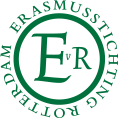Poet
Adam Small

Adam Small
(South Africa, 1936)
© NB Publishers
Biography
Adam Small was born on the 21st of December 1936 in Wellington in the Boland region of the Western Cape. His father’s family belonged to the Dutch Reformed Church and his mother’s to the Islamic faith. These influences instilled in him a sense of cultural and religious tolerance at an early age. He was raised on the farm in Goree outside Robertson, where his father was the school principal, community leader and lay preacher to the farm labourers. In his earliest recollections he recalls the orange colour of the soil as well as the simplicity and poverty of the people.
Small was appointed as lecturer in Philosophy at the University of Fort Hare in 1959 and assumed the same position at the University of the Western Cape in 1960. In the early seventies he became involved in the activities of the Black Consciousness Movement and the student organisation SASO. He lead a protest against the conservative leadership at UWC and instigated a march off campus after which he was forced to resign. He stayed for some time in Johannesburg and worked at the University of Witwatersrand’s student services before returning to Cape Town in 1977. In 1983 he rejoined UWC as head of the department of Social Work from where he retired in 1997. In recent years Small has withdrawn from the public domain and has not published any creative writing.
Small debuted in 1957 with Verse van die liefde, which was followed by Klein simbool (1958), a collection of short prose sketches and aphorisms. The long essay Die eerste steen? (1961) laments the detrimental influence of apartheid on race relations.
A persistent theme in Small’s work is the depiction of the lives of oppressed people and the working class, under apartheid. In his poetry collections Kitaar my kruis (1961) and Sê Sjibbolet (1963) he criticises the policies of forced removals, race classification, discrimination and separate amenities. The poet sees himself as a Moses-like figure that must lead his people out of bondage, using his writing as a weapon in the struggle, as seen in ‘Kô lat ons sing’.
He uses satire to expose the dehumanisation of the system and the false values of authorities. The poem ‘Doemanie’ is an excellent example of Small’s satirising of false Christians.
Oos Wes Tuis Bes Distrik Ses (1973) is a book of poems with photos by Chris Jansen, paying homage to the destruction of homes and livelihoods caused by the forced removal of an entire community from District Six.
In the midst of the Black Consciousness Movement, in 1975, a collection of quatrains titled Black Bronze Beautiful was published. Through a series of lyrical verses, the book bears testimony to pride in blackness, black history and culture, and propagates the solidarity of black people in their struggle against white oppression.
Small is regarded as one of the leading playwrights in Afrikaans. André P. Brink regards Kanna hy kô hystoe (1965) as a pinnacle in the Afrikaans drama tradition.
The play deals with an individual who is torn between his own ambitions and the expectations of his people. His family has sacrificed a lot to afford him a decent education and fall prey to poverty and dire socio-economic circumstances, hoping that he will one day uplift them. The play puts the spotlight on the political system that imprisons people in their desperate social environment and explores the question of man’s responsibility for his deeds. Critics praised the play’s use of conventions of the Brechtian epic theater and the way it experimented with music, decor and time.
His other plays include: Joanie Galant-hulle (1978), which deals with the forced removal of the Anthony family from their home in Woodstock and their subsequent travails on the Cape Flats, rife with gang violence and poverty; and Krismis van Map Jacobs (1983) explores an individual’s search for identity and his guilt after an act of violence perpetrated against his family, for which he is partly responsible. The unpublished play The Orange Earth (1984) has autobiographical elements and refers to the colour of the soil where he spent most of his childhood years.
In the novel Heidesee (1979) Small explores the influence of apartheid and capitalistic economy on a small community of fishermen.
© Steward van Wyk
BibliographyPoetry
Verse van die liefde, Culumborg, Cape Town, 1957
Klein simbool: prosaverse, HAUM, Cape Town, 1958
Kitaar my kruis, HAUM, Pretoria, 1961
Sê Sjibbolet, Perskor, Johannesburg, 1963
Oos Wes Tuis Bes: Distrik Ses, Human & Rousseau, Cape Town, 1973 (photography by Chris Jansen)
Black Bronze Beautiful: quatrains, AD Donker, Johannesburg, 1975
Essays
Die eerste steen? HAUM, Cape Town, 1961
Drama
Kanna hy kô hystoe, Tafelberg, Cape Town, 1965
Joanie Gallant-hulle, Perskor, Johannesburg, 1978
Krismis van Map Jacobs, Tafelberg, Cape Town, 1983
Novels
Heidesee, Perskor, Johannesburg 1979
Translation
Oh wide and sad land: Afrikaans poetry of NP van Wyk Louw, Cape Town, Maskew Miller, 1975
Links
An image of the house in which Adam Small grew up, courtesy of the Wellington Museum
Jason Lloyd asks where Adam Small\'s Hertzog Prize is, in Rapport (in Afrikaans)
An article on Adam Small by Ampie Coetzee (in Afrikaans) from Die Burger, 5 November 2001
An article on the symbols of the South African flag by Adam Small (in Afrikaans) from Die Burger, 30 March 1994
An essay on the life and poetry of Adam Small by Steward van Wyk (in Afrikaans) on Litnet
An essay on cultural hybridity in the work of Adam Small by Steward van Wyk (in Afrikaans) on {a href="http://litnet.co.za/cgi-bin/giga.cgi/relax/giga.cgi?cmd=cause_dir_news_item&cause_id=%201270&news_id=17753&cat_id=201""An_essay_on_Adam_Small_by_Jakes_Gerwel_(in_Afrikaans)_on_{a_href="http://www.oulitnet.co.za/seminaar/15gerwel.asp" title="Litnet"}
Adam Small is awarded the Patrick Petersen Prize
Heindrich Wyngaard interviews Adam Small on his 60th birthday in Die Burger, 24 December 1996
Poems
Poems of Adam Small
Sponsors
























